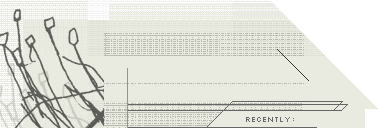Haco is heroic. Iconic. An artist actually worthy of all the genuflection paid as respects to so many rock 'n' roll saints who, more often than not, seem more deserving of slurs and slander from the curs who'd rather grovel and pander. If the practices of musical hagiography were grounded in teachings of truth — or, at least, truth as I see it — all of these false idols would crumble, and those adventurous enough to tread through the tumbled rubble would only come across those committed enough to be musical truthseekers, those who display daring disregard for pop-cultural orthodoxy, those playful enough to submit themselves to whims of unseen spirits, those in whom capriciousness and consciousness and thoughtfulness are indivisible as musical one in the same. Haco, as hero, is all of these things. She forges a sound always shifting, in many guises, through the use of this one sole spirit of musical truth, her forged career path thus far walked in ways as iconoclastic and idiosyncratic as they are iconic and heroic. Haco is a savage free spirit who measures up to the statuesque figure cut by Mikami Kan, a girl-at-heart whose distillations of technology size up to the summits conquered by Björk. She's a conceptual musician whose groupings of sounds cross boundaries of culturalism and cross-fertilize notions of delineated pop/experimentalism in ways that kick the ass of cockheaded egotist/fusionists like Bill Laswell. She's been associated with some of Japan's greatest musical cultists — Makoto Kawabata, Otomo Yoshihide, Eye — but her own music is yet to garner a following that comes close to a cult. Dress me in white robes, though, and see these words as text that's waving the flag of Haco, because a cult, seeing the truth, needs to be born.
The latest idiosyncratic outing in Haco's glittering canon comes in the form of a collaboration with Cinorama's Sakamoto Hiromichi, and it — in all its regal beauty — seems to deem this as good a time as any for infidels to become acquainted with the jewel (and I mean that in a strictly lower-case sense) of the Japanese avant-garde. To this collaboratory table, Sakamoto brings with him all his regular array of ornate and ornamental instruments, arranging cello and musical saw and jew's harp and music boxes and all manner of everyday appliances in ways that're bleakly baroque. While Cinorama's cinematic sounds often traipse into gear that's near Godspeed!ish in its wail and woe, on Ash in the Rainbow things veer between sheer beauty and silly playfulness, Haco's cold-driven-snow voice veering from angelic to sardonic to suit the mood. Like so many great out-rock discs from Japan, the record balances the mystic qualities of music with the moods and mundanities of daily life, both of these existing in and coming from the same place, and the album flipping from graceful to goofy as these moods suit. In this, it seems suitable that things culminate in a closing cut, "Deep Sky," that's afloat on cottony clouds of cello, sprinkles gentle rains of slowly-wound music box, and finds Haco offering the most emotive vocoder singing since Missy Elliott's "Take Away."
|

